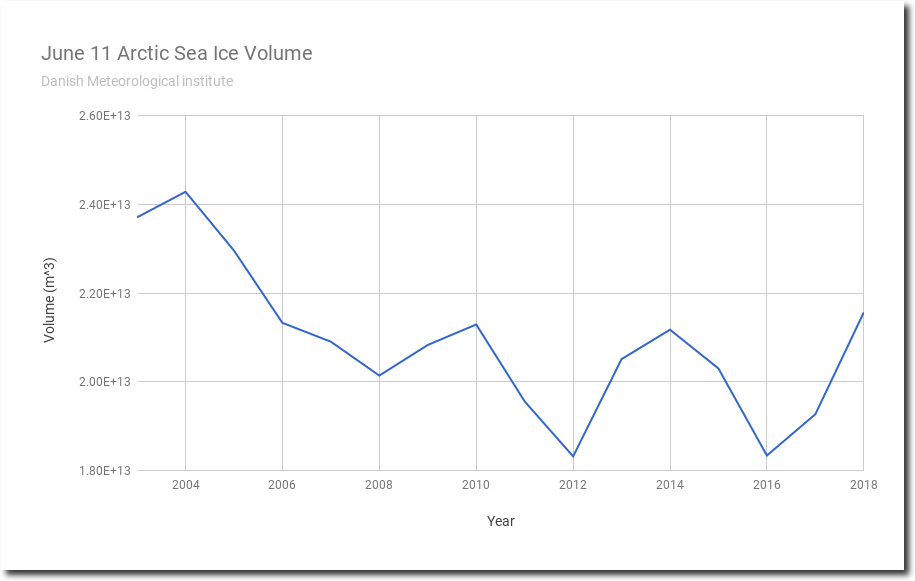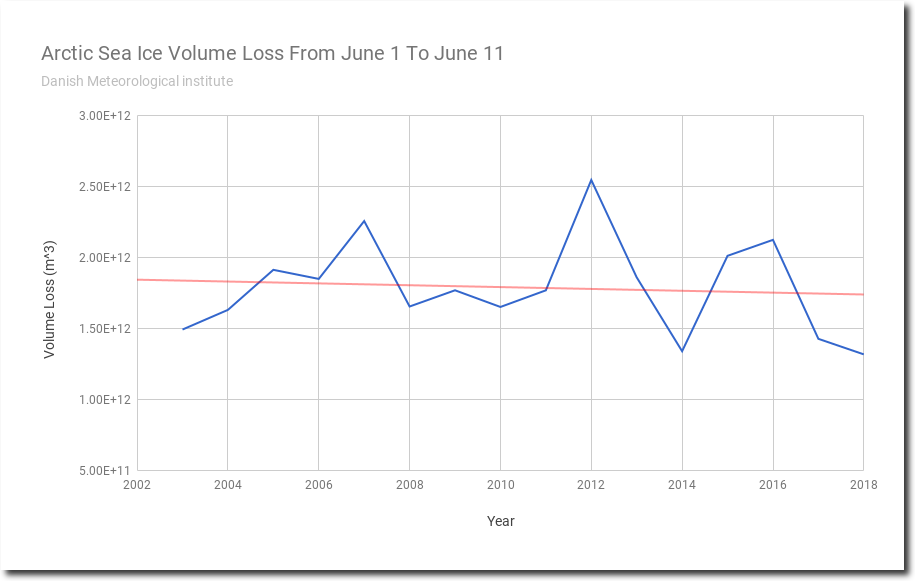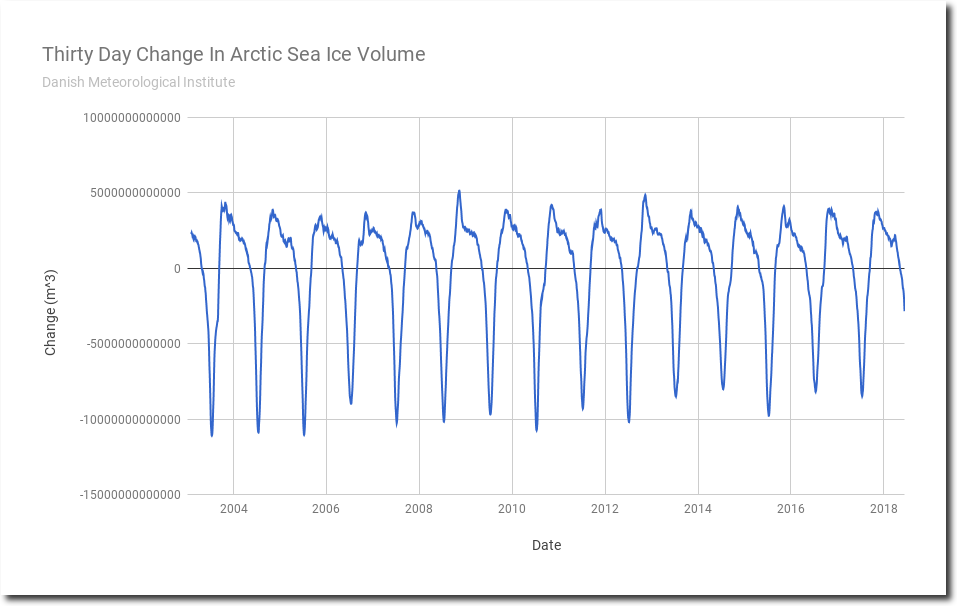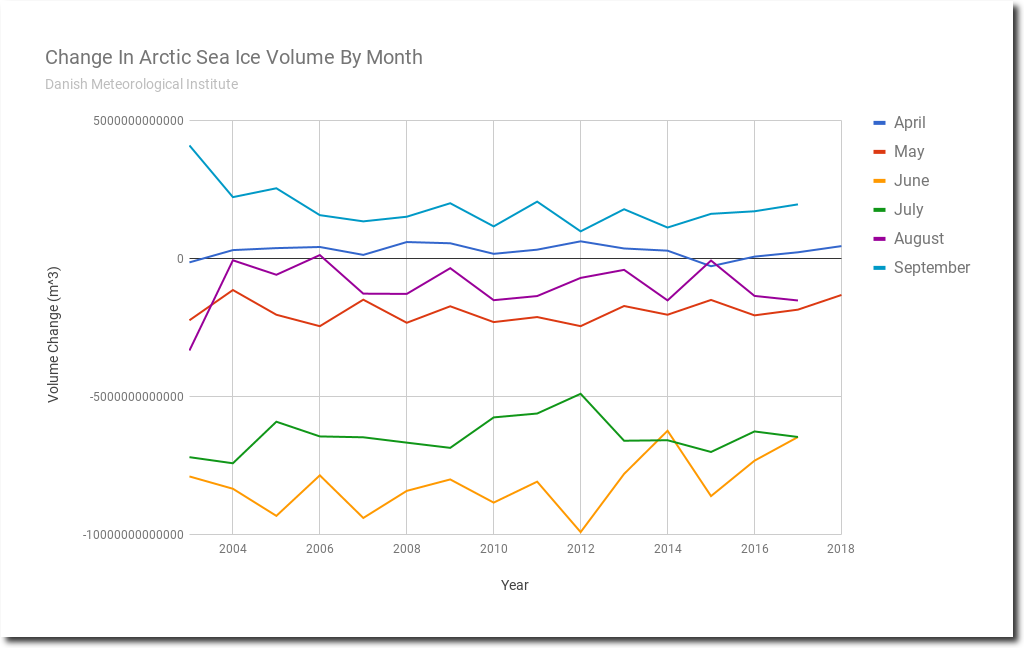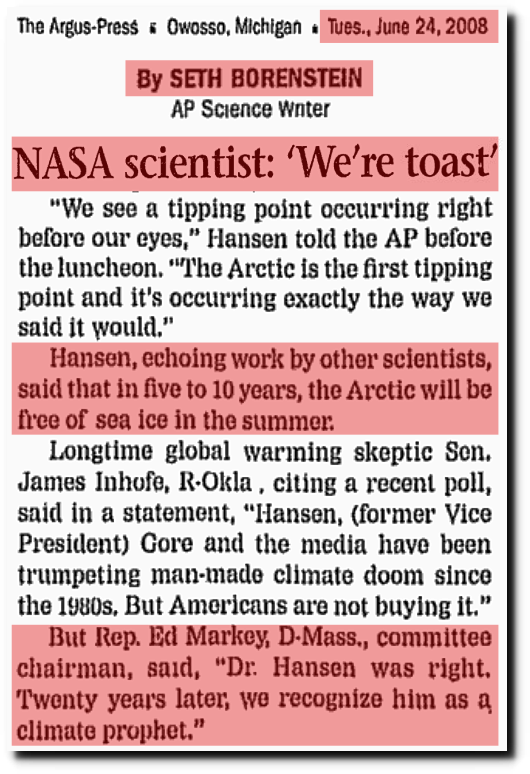Arctic sea ice is melting at the slowest rate on record, and volume is the highest in thirteen years.
The graphs below show why this is a huge problem for climate alarmists. Due to recent cold summers in the Arctic, peak melt rates have dropped over the past 15 years. The Arctic used to regularly see months which lost over a trillion tons of ice, but recent years have generally had much slower melt rates.
But here is the real problem for alarmists. The only months where significant melting occurs are June and July. By August, the sun is too low in the sky to melt much ice – and during August 2006 the Arctic actually gained sea ice.
June is the peak melt month, and this June is seeing record slow melt. Short of an asteroid strike, there is zero chance of an ice-free Arctic this year, or any time in the foreseeable future. Climate alarmists suffer from two main problems.
- They don’t understand that the Earth is round, and that by mid-August the Sun is too low in the sky to melt ice near the North Pole.
- They focus on nearly meaningless sea ice extent graphs.
Extent graphs frequently show a large decline in August because early winter storms break up thin ice around the edges. This makes Arctic alarmists feel very relieved, but has little effect on the ice volume. But no one ever said climate alarmists have much going on upstairs.

